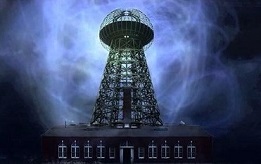Teslas self-acting Engine?
The thermodynamic device described below Is really a curiosity, I found the description many years ago in a publication by Patric Kelly, who did a very extended journalistic work on the so-called free energy devices. This one called really my attention.
In contrast to the conventional and well-known machines as the Stirling motor or the thermoacoustic resonator this weird motor does not need a cold pole to work.
Lately several videos from Peter Lindemann have been released to general public, here I learned about Teslas idea to tap into the vast thermal energy contained in the atmosphere with the self-acting engine. It seems that there are uncountable of devices already made and continued in manufacturing, only they are intended for another purpose: burning fossil fuels!
It was reported that some researchers had worked with four stroke IC engines. Their identity was not exposed, therefore I don’t know to whom give the credit for this work. They had removed the carburettor and ignition system from a small engine of approximately 300ccm displacement and injected water mist into the intake. After several tries the motor started to run. They stated that it was not easy to start, but once succeeded, the motor continued rotating at idling speed. The ambient temperature was around 25 degrees C, and the exhaust temperature was measured at -8 degrees C. It has been stated that the size of the water mist droplets had to be adjusted to get the effect and the engine had to be at ambient temperature.
I will give a possible explanation of the thermodynamic principle that could produce such an effect:
In the first stroke of the engine warm ambient air mixed with water mist is taken into the cylinder. In the second stroke the mixture is compressed and therefore the air temperature rises to a few hundred degrees C. The heat is transferred to the water droplets. But as the pressure is high, the droplets can’t evaporate still. In the third stroke the temperature of the air decreases, and simultaneously the (hot) water droplets start evaporating and maintaining the pressure at a higher value during the working stroke. Ideally at final of this stroke all the water would have changed into gaseous state, below the ambient temperature, and is in the fourth cycle expelled to the exhaust. Then the next cycle starts…
Let’s review the important parts of the cycle.
There are two thermodynamic principles to be considered, first the properties of a gaseous medium, which manifests as a proportional relationship between pressure and temperature, also called an adiabatic process. This means simply that the temperature rises when the pressure of the medium increases, and vice versa. The second principle relates to the properties of a medium when it changes its state of aggregation. It is known, that a medium in liquid state of aggregation do not have the proportional relationship between temperature and pressure mentioned above. Despite of changes of pressure, the temperature of a liquid will not change. But what changes is the point of ebullition (of liquid) and condensation (of vapor). We also know that a transfer of energy occurs with the change of the state of aggregation. One mol of steam contains more energy than one mol of liquid water.
Let us analyse the process in this context:
The energy to be harnessed is contained in the warm ambient air and the water mist at ambient temperature. During the cycle of compression, the pressure in the cylinder increases, and also the temperature of the air. The water droplets(liquid) do not heat up cause of the increased pressure, but they absorb the heat energy of the compressed air. There is a transfer of energy from the gaseous medium to the liquid droplets. When the piston passed the upper dead point the pressure starts to decrease, and the hot water droplets evaporate. This causes that the pressure becomes asymmetric in relation to the compression cycle, which means that during the working cycle the pressure will be sustained at a higher value for a longer period of time due to the evaporation of the droplets. In this part of the process the expanding air, which has transferred its thermal energy to the water droplets, cools down to a lower temperature than that of the ambient. Simultaneously the evaporating droplets transform the retained heat energy in pressure, causing the propulsion of the piston. From the exhaust the cold air mixed with water vapor (still in gaseous state) is expelled.
If the concept can be proved as valid, it would be straightforward to develop adequate engineer solutions for practical implementations.
Hopefully it will be of some practical use or as instructive example.
Regards
Vidura



